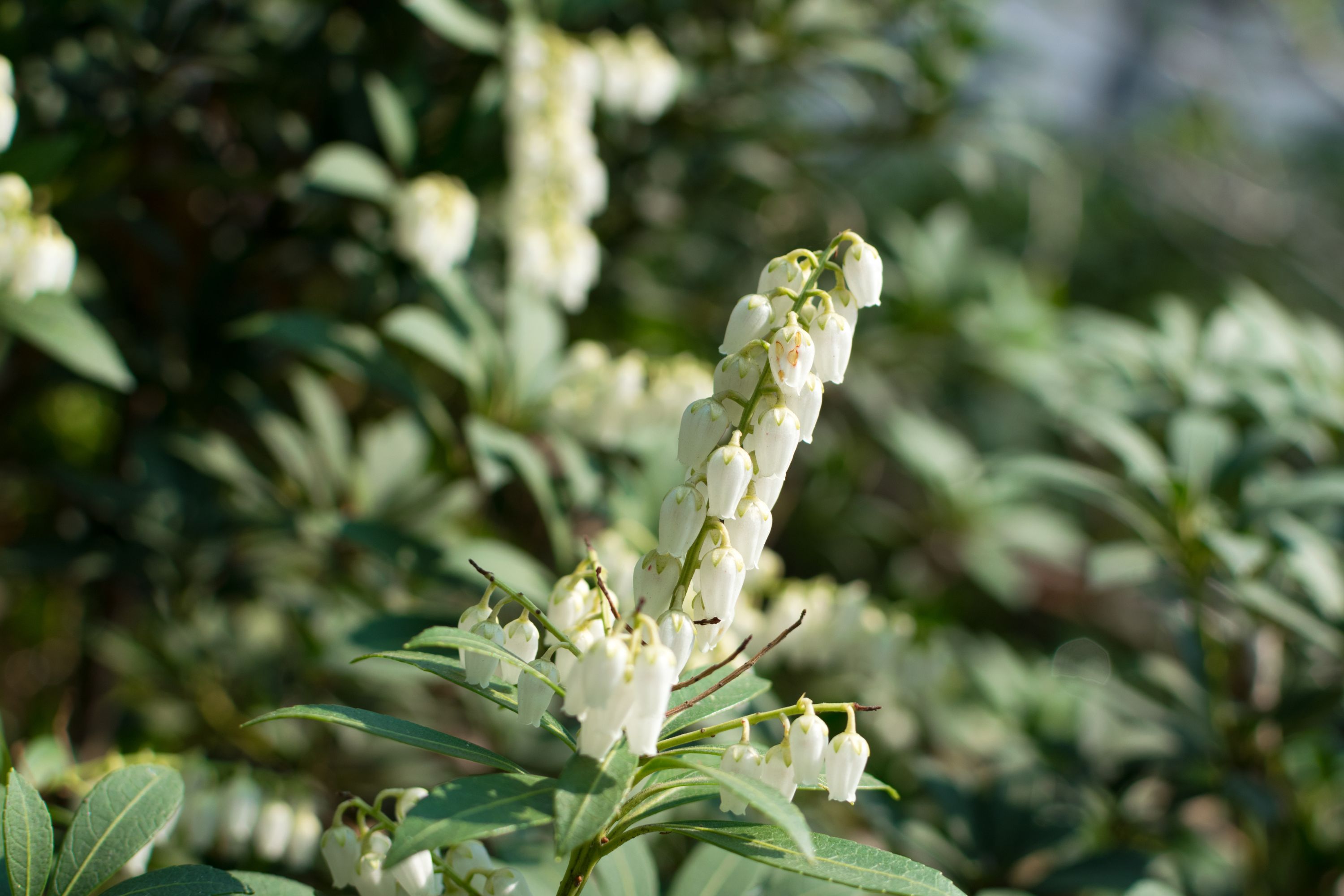Pieris formosa
(Pieris formosa)

Description
Pieris formosa, called the Taiwan pieris or the Himalayan andromeda, is a species of flowering plant in the genus Pieris native to Nepal, the eastern Himalaya, Assam in India, Myanmar, Vietnam, Tibet, central and southern China, but not Taiwan. The 'Wakehurst' cultivar of the variety Pieris formosa var. forrestii has gained the Royal Horticultural Society's Award of Garden Merit as an ornamental, and is also considered by them as a good plant to attract pollinators. A vigorous evergreen shrub to 4 m (13 ft) in height, its leaves open red in early spring, turning green later. The trusses of creamy white flowers open at the same time as the young leaves. Like all pieris, it prefers a partially shaded spot in acid pH soil. Pieris is a genus of seven species of shrubs in the flowering plant family Ericaceae, native to mountain regions of eastern and southern Asia, eastern North America and Cuba. Known commonly in North America as andromedas or fetterbushes, they are broad-leaved evergreen shrubs growing to 1–6 metres (3 ft 3 in – 19 ft 8 in) tall and 3–10 ft (0.9–3.0 m) wide. The leaves are spirally arranged, often appearing to be in whorls at the end of each shoot with bare stretches of shoot below; they are lanceolate-ovate, 2–10 cm (0.8–3.9 in) long and 1.0–3.5 cm (0.4–1.4 in) broad, leathery textured, and with an entire or serrated margin. The young leaves in spring are typically brightly coloured. The flowers are bell-shaped, 5–15 mm (0.2–0.6 in) long, white or pink, and arranged in racemes 5–12 cm (2.0–4.7 in) long. The fruit is a woody capsule which splits into five sections to release the numerous small seeds. Pieris species are used as food plants by the larvae of some Lepidoptera species including the engrailed. The genus name derives from Pieria, a place in Greece, according to Greek mythology the home of the Muses. They are commonly grown as ornamental plants, valued for year-round interest due to bright red new growth in early spring, chains of small, white flowers in mid-spring, and buds that remain on the plant through the winter. Numerous cultivars have been selected for different spring foliage colour. They grow best in a shady spot, sheltered from drying, winter winds. They prefer acid soil, and should be mulched once per year, using a two-inch covering of either peat or composted pine needles. The flowers give the plant one of its alternative names, 'Lily of the valley shrub' (though Pieris is not closely related to Convallaria).
Taxonomic tree:







